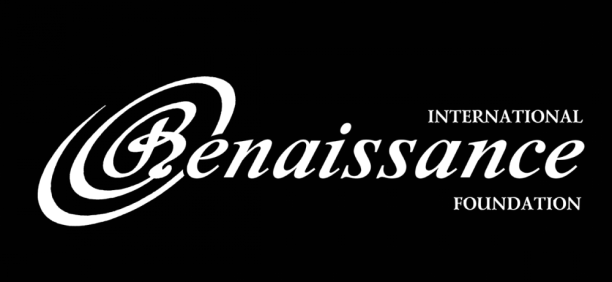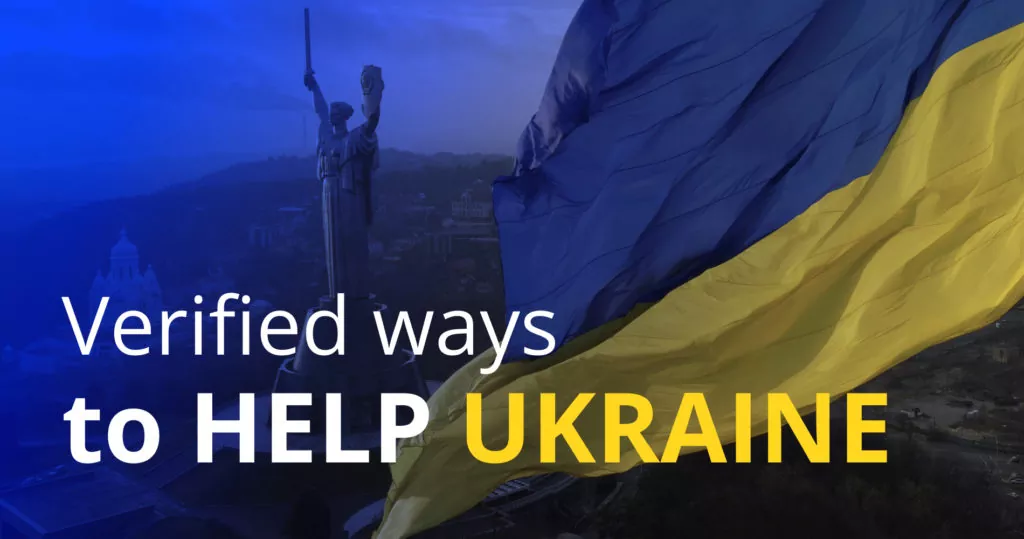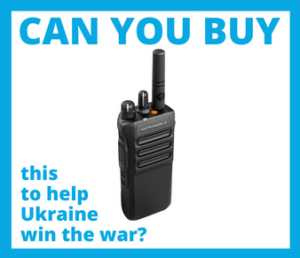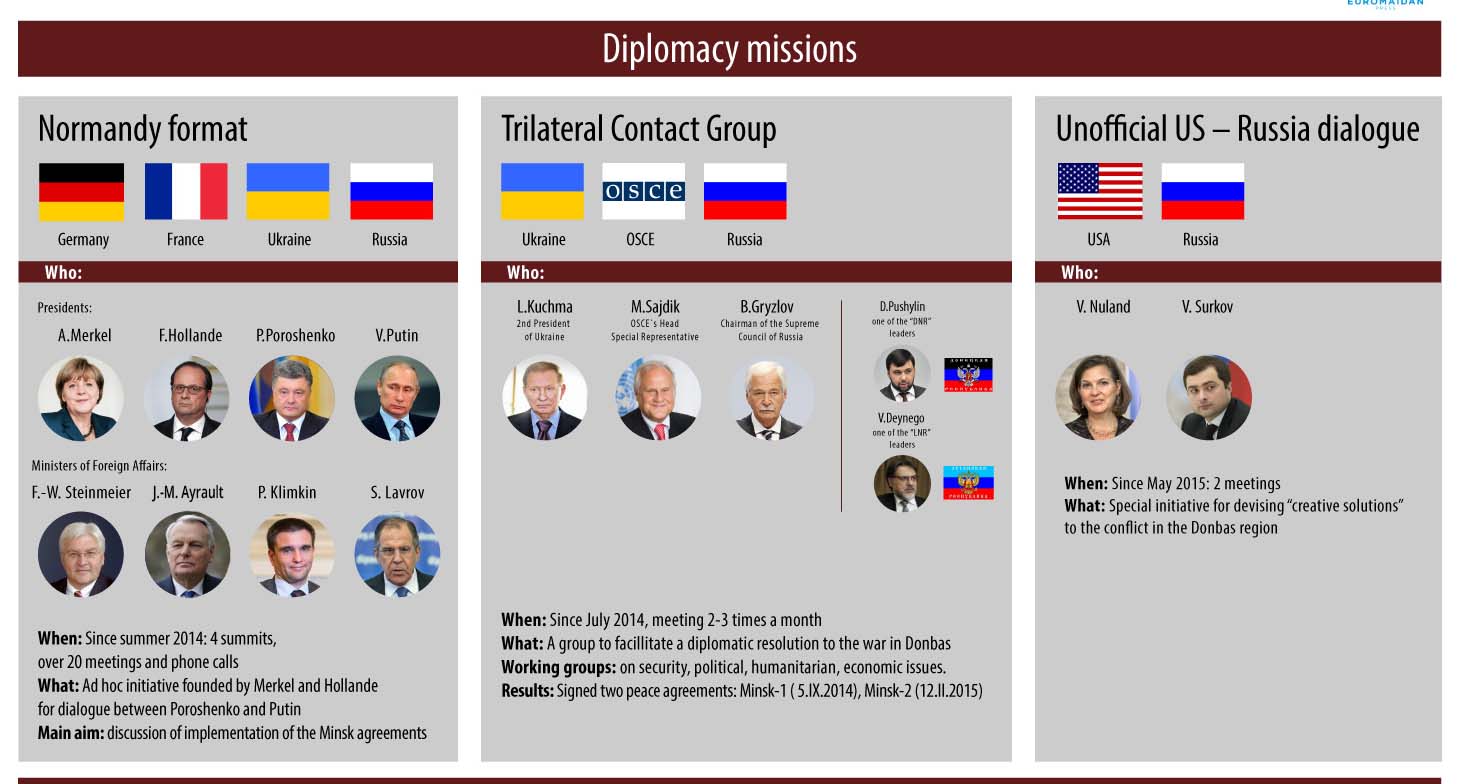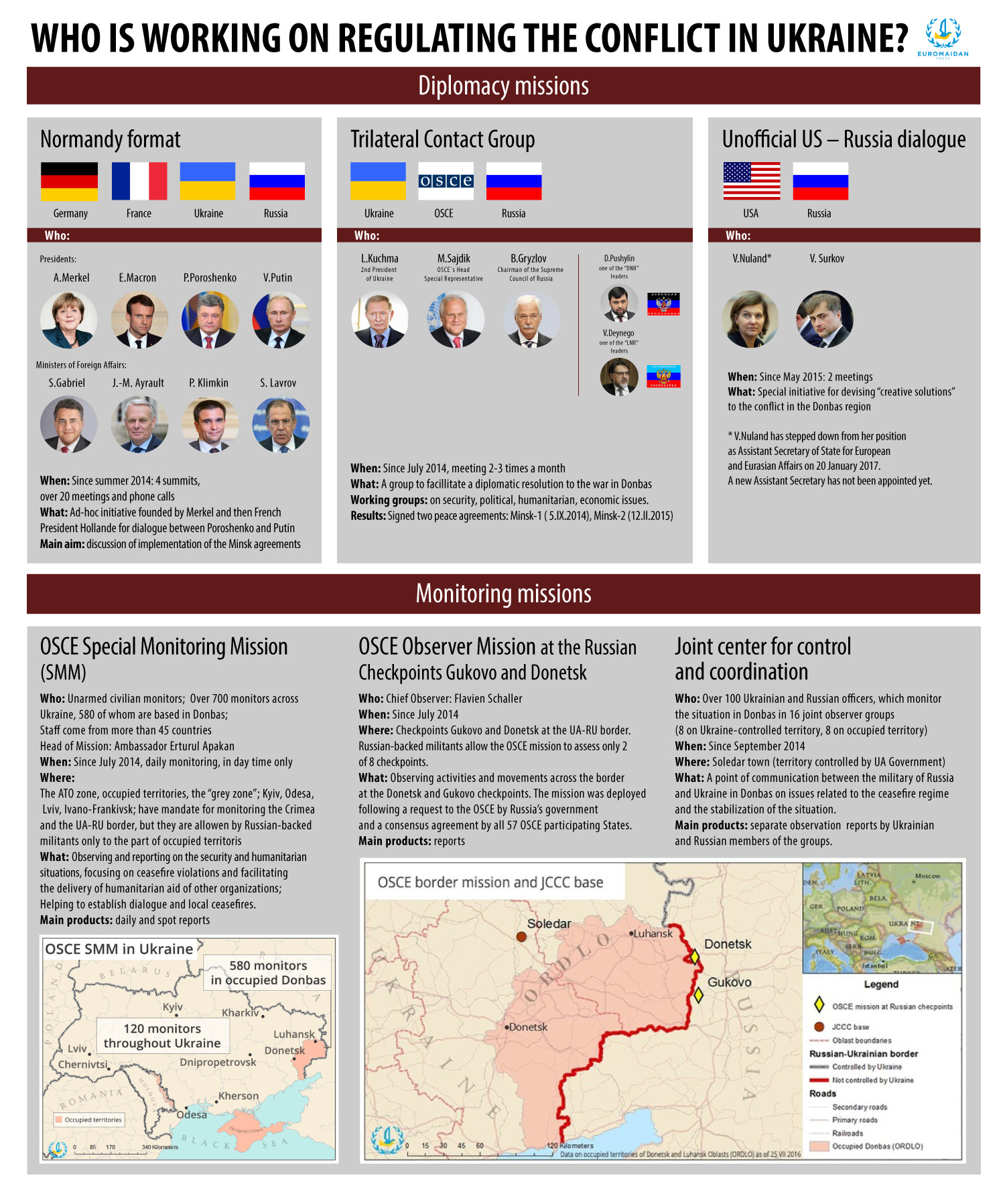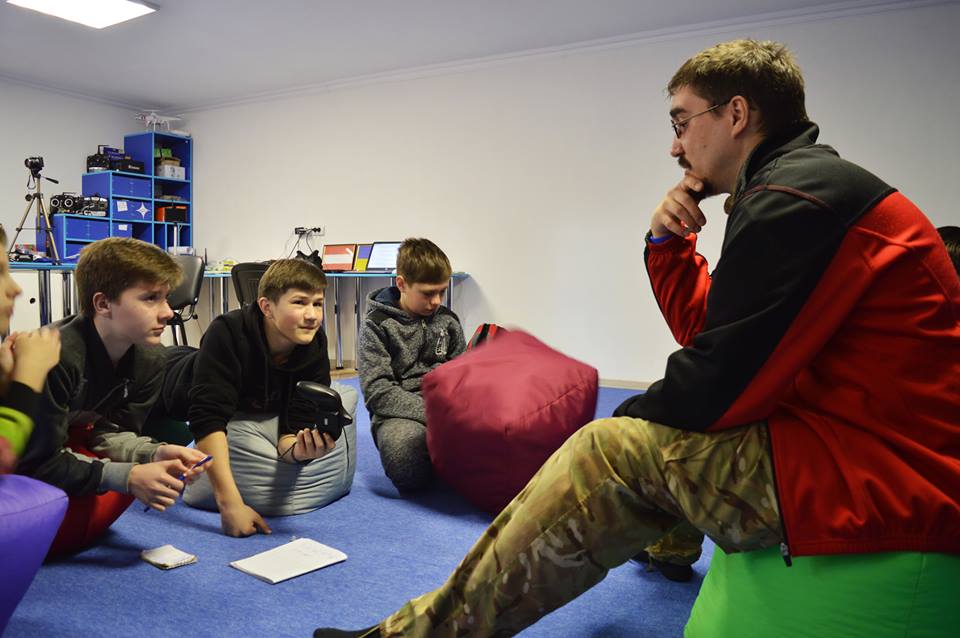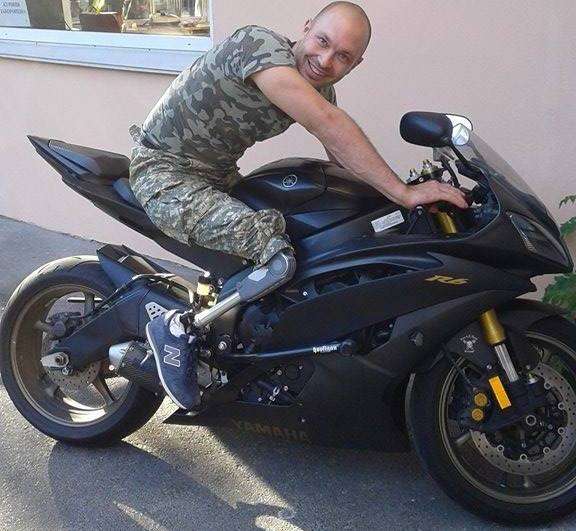The Minsk peace process is so far seen as the only way to stop the war between combined Russian-separatist forces and the Ukrainian army in Donbas. There was a Minsk-1 first signed in September 2014, and then a Minsk-2 adopted in February 2015. The two-year process has so far frozen the conflict and bought time for Ukraine to conduct reforms, but has been extremely difficult to follow. Here we explore who is who in the process designed to bring Peace to Ukraine.
Read more: 12 months of Minsk-2. Examining a year of violations
Diplomacy missions
Normandy format
Also known as the Normandy contact group, this is a meeting of senior representatives of four countries – Germany, Russia, Ukraine, and France. The name comes from the first meeting of the heads of the four states, held on 6 June 2014 in Normandy (France) and was launched as an ad-hoc initiative by German Chancellor Merkel and then French President Hollande with the goal of finding a peace agreement for Ukraine between Ukrainian President Poroshenko and Russian President Putin. Other meetings of the heads of states have taken place on 16 October 2014 in Milan, 11 February 2015 in Minsk (when Minsk-2 was signed), and one is planned for 19 October 2016.
Otherwise, the Normandy format operates mainly through telephone calls between the Ukrainian, Russian and French presidents, the German chancellor and their respective ministers of foreign affairs, and meetings of representatives of the foreign ministries of the participating states.
Trilateral Contact Group
A group of representatives from Ukraine, Russia, and the Organization for Security and Co-operation in Europe that was formed as means to facilitate a diplomatic resolution to the war in Donbas. Headed by Ukraine’s second President Leonid Kuchma, Chairman of the Russian Duma Boris Gryzlov, and Special Representative of the OSCE Chairperson-in-Office in Ukraine Martin Sajdik, but meetings have involved various other representatives, including from the side of the Russian-backed separatists. The Trilateral Contact Group has several working groups – on security, political, humanitarian, economic issues. As a result of the meetings, two peace agreements were signed: Minsk-1 (5.IX.2014), Minsk-2 (12.II.2015).
Unofficial US-Russia dialogue
This bilateral process originated in May 2015 as an accompaniment to the Barack Obama administration’s decision to seek Russia’s “help” on Syria. Assistant Secretary of State Victoria Nuland has been tasked to conduct the unofficial discussions with Moscow about Ukraine, initially with Russia’s Deputy Foreign Minister Grigory Karasin after May 2015 and continuing with top presidential advisor Vladislav Surkov since January 2016. Unlike other diplomatic initiatives, this channel is not designed for any systematic work, but rather “creative” solutions in the war in Donbas, which are rumored to take the form of “interim agreements” for Russia under the guise of implementing Minsk.
Monitoring Missions
OSCE Special Monitoring Mission
Monitors from the Organization for Security and Co-operation in Europe (OSCE) were sent to Ukraine after a request by the Ukrainian government, and an agreement between all member states of the OSCE, including Russia. The Special Monitoring Mission (SMM) deployed on 6 April 2014, and has remained in Ukraine to “contribute to reducing tensions and fostering peace, stability, and security.”
The group consists of over 700 unarmed civilian monitors across Ukraine, 580 of whom are based in Donbas. The staff come from more than 45 countries, and the mission is headed by Head of Mission: Ambassador Erturul Apakan.
The mission conducts its monitoring only during the daytime throughout the territory of conflict in Donbas and the “grey zone.” Also they are present in Kyiv, Odesa, Lviv, Ivano-Frankivsk; have mandate for monitoring the Crimea and the Ukrainian-Russian border, but they are allowed by Russian-backed militants only to the part of occupied territories.
The group is responsible for observing and reporting on the security and humanitarian situations, focusing on ceasefire violations and facilitating the delivery of humanitarian aid of other organizations, as well as helping to establish dialogue and local ceasefires. The OSCE SMM produces daily and spot reports.
OSCE Observer Mission at the Russian Checkpoints Gukovo and Donetsk
The OSCE Observer Mission at the Russian Checkpoints Gukovo and Donetsk was deployed since July 2014 following a request to the OSCE by Russia’s government and a consensus agreement by all 57 OSCE participating States. It is composed of 20 Border Observers including the Chief Observer Flavien Schaller. The Mission is supported administratively by the OSCE Secretariat in Vienna.
The mission focuses on Gukovo and Donetsk because Russian-backed militants allow the OSCE mission to assess only 2 of 8 checkpoints, its goal is to observe activities and movements across the border. The mission produces reports.
Joint Center for Control and Coordination
This is a bilateral group consisting of over 100 Ukrainian and Russian officers, which monitor the situation in Donbas in 16 joint observer groups (8 on Ukraine-controlled territory, 8 on occupied territory) since September 2014. It is called to be a point of communication between the military of Russia and Ukraine in Donbas on issues related to the ceasefire regime and the stabilization of the situation. The OSCE SMM often asks the JCCC to help resolve the situation when its actions are restricted by members of either the Russian-backed militants or the Ukrainian forces.
The JCCC center is located in the town of Soledar, located on territory controlled by the Ukrainian government. They produce separate observation reports by Ukrainian and Russian members of the groups.
Related:
- A frozen conflict better for Ukraine than what Putin wants and what West may accept, Piontkovsky says
- Four key points of the new Minsk process roadmap
- Red lines Ukraine can’t cross in the Minsk process
- Carl Bildt on Minsk Agreements: We have to struggle along and see if it works at some point
- OSCE admitted its monitoring in Donbas is very limited
- 12 months of Minsk-2. Examining a year of violations
- Russia will not fulfill Minsk obligations until forced — Ukrainian diplomat
- OSCE SMM deputy chief on why expectations of them are too high
- The OSCE silently pushing Russia’s Eurasian project
- OSCE getting more “neutral”

